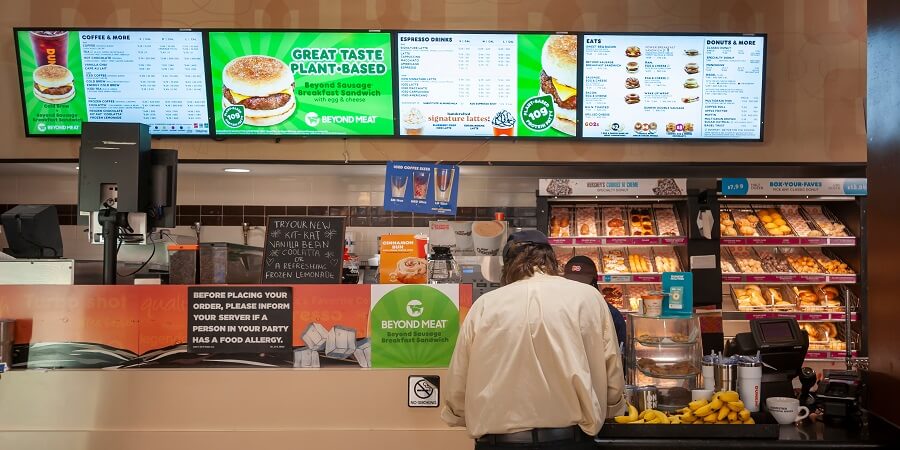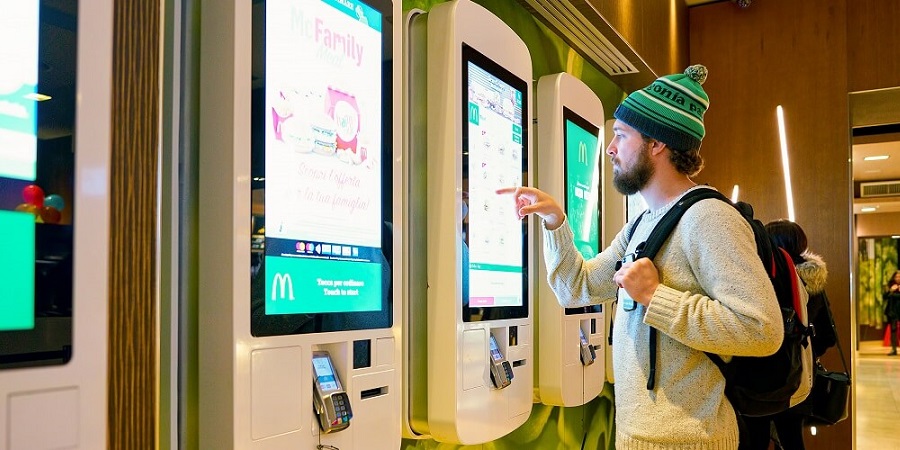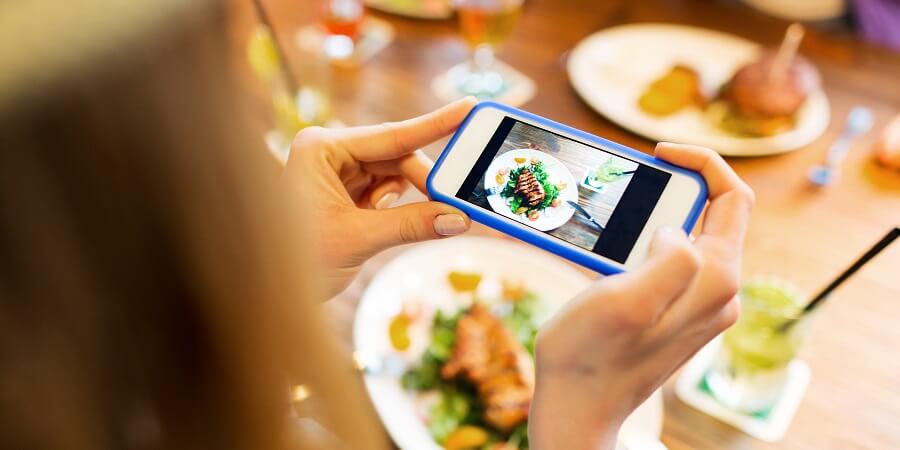| October 11, 2021
How digital restaurant signage can serve up better content and experiences for diners
In 1955, restaurants represented approximately 25% of US spending on food. By 2019, that number had risen to 51%.
Why? Explanations vary, but it seems to be partly convenience, partly the fun of dining out. There’s also the greater access afforded by food delivery services from foodora, Uber, DoorDash, and many others. It also helps that the range of options today hits a huge variety of price points and dietary options.
Appealing to such a diversity of preferences means the “restaurant industry” represents enormous variety, many unique approaches taken to meet customer demand. What unites all players in the space is a need to communicate effectively with diners and establish the atmosphere they are looking for.
Here’s how digital signage makes that easier.
Sell more (and smarter) with dynamic digital menus
The old way of using static menus has quickly been overtaken, at least by most major players in the QSR and fast casual spaces, by digital menu boards. Brighter, with more vivid color, and capable of displaying moving imagery, digital menus are more attractive on a visceral level. The research bears that out, with a study by Ocean Outdoor finding that moving content on signage is 2.5 times as effective at driving an emotional reaction as static content.

This improvement is just the baseline, though. With intelligent software powering menu displays, it’s possible to add dynamism and automation for better sales and a more fluid customer experience.
Sell upgrades and combos with flashier advertising
It’s easier to sell more to an existing customer than to sell to a new customer, so doing a good job of upselling is a key task restaurants should take on. With digital menu boards, it’s easy to create animated videos that showcase different combos or upsell options and demonstrate the value that they offer.
Highlight the day’s deals for a little extra enticement
Special time-limited products are a big draw (#szechuansauce, anyone?) and there’s no better way to draw attention to special menu items than to give them prominent placement on a bright, beautiful display.
Automatically stop promoting items that have sold out
It’s bad enough when regular menu items sell out, but when time-limited specials with cult followings and fever-pitch excitement sell out, you can have something of a PR crisis on your hands (#szechuansauce, anyone?)
Modern digital menu solutions can integrate the digital menu system with point-of-sale software to track the status of items being sold and remove sold-out foods from being displayed on menus. It’s a way to help manage guest expectations and prevent disappointment from spiralling into a newsworthy story.
Put your guests in control with touchscreens
Digital screens aren’t just a passive medium through which to deliver menus and other content, or at least they don’t have to be. Interactive displays have made major inroads in the restaurant industry in the past several years, and in multiple different forms.
The McDonald’s touchscreen kiosks are a prominent example, and have boosted sales from 3-9 % in many of the regions in which they have been deployed, but they aren’t the only example. Many sushi restaurants, for instance, handle ordering with screens installed or otherwise attached to tables. Information screens in all manner of restaurants, meanwhile, can be used to provide a more self-directed and informative avenue toward discovering more detailed ingredient lists or allergen warnings.

Best of all, when touch screens are not in use, they can also be used to deliver informational or promotional content to people who are in the vicinity, just like regular screens do.
Deliver informative or attractive content to your customers
Digital displays can be used for purposes other than just menus and advertising. Audiences in many restaurants appreciate having ambient content to accompany their coffee, lunch, or after work meal.
For QSRs, coffee shops, and other casual locales, things like news headlines, weather, and general diversions are likely to grab guests’ attention and entertain them for the duration of their stay. For sports pubs, screens could be used to run interesting stats or trivia about teams playing in that day’s game. But even more upscale environments can make use of digital signage. Digital signage can be used to display modern artwork that creates a unique ambiance and provokes conversation among patrons.
Example: While this media wall is not from a restaurant, it provides a striking demonstration of the artistic potential offered by digital signage.
It’s worth noting that this content and the screens it appears on can all be run through the same digital signage platform as any other menu boards, advertising displays, or interactive screens on your network.
Use screens to flaunt your cred and get social
Restaurant-goers are highly self-directed nowadays, with many spending a fair amount of time researching their options before ever setting foot in the door. According to Trip Advisor’s “Influences on Diner Decision-making” report, about 94% of US diners claim to be influenced by reviews when going to a restaurant, with ratings websites like Trip Advisor, Yelp, Google Maps. and others taking the top spot for most influential.
Achieving a great rating takes hard work, a good product, dedication to customer service, and a bit of luck. If you’re proud of your score on one or more of these services, why not put them up for all to see inside of your restaurant? It’s a little extra proof that your establishment has become a destination to return to for continued enjoyment.
As a bonus, the reviews can be accompanied by appeals to diners inside of the restaurant to take the time to leave their own reviews – a good way to keep growing your online influence.
It bears mentioning, too, that social media posts about your brand can do a lot of good inside of your establishment, not just inside of an app. It’s like unleashing an endless team of great amateur photographers to bring your menu to life. Showcase selected posts tagged at your restaurant, or that display a particular hashtag, and you can create a sense of community while simultaneously marketing your offerings more creatively and compellingly than you likely could otherwise.

Show off your loyalty program to bring more customers in
Loyalty programs are good for business. According to research by Bond Brand, 70% of loyalty program members say that the program makes them more likely to recommend the brand to others. About 77% say that the program makes it more likely for them to do business with the brand, and 63% say that they plan their spending around loyalty program benefits.
With digital displays inside of a restaurant, the brand can easily promote the steps necessary to achieve membership, or advertise special promotions uniquely available to members. Taking this a step further, with displays that can be interacted with through touch, NFC, or QR codes, is another good way to boost engagement with your guests and create more tailored, memorable experiences.
Do you want to drove more profits and create better restaurant experiences?
Get your free Broadsign demo to see how digital signage can help!

